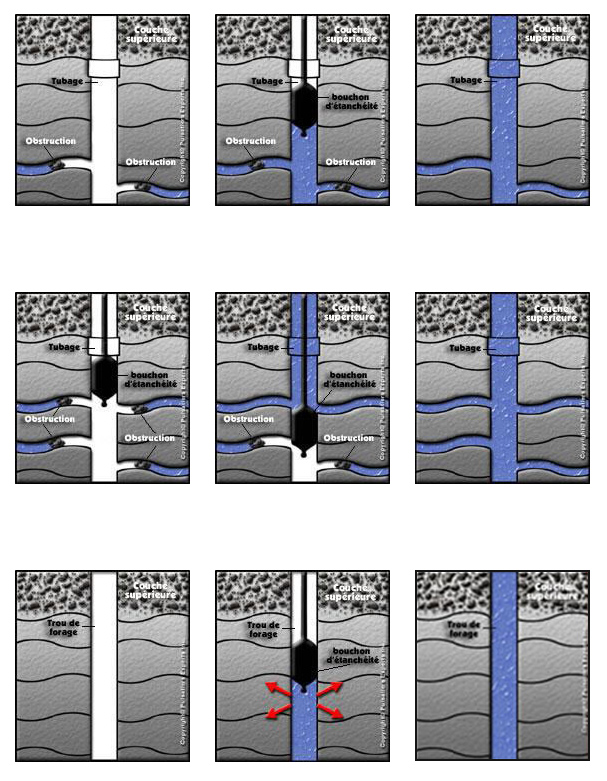Hydrofracturation
There are many ways to raise the flow rate of a well. The operation must be the object of a calculated choice. In the case of an open type abstraction job conducted in the aquifer’s rocky formation, the hydraulic fracturation or hydrofracturation can be applied to raise the flow rate of a well that is sealed or not.
The hydrofracturation consist of entering and blow up an obstructer in the well to a certain determined depth in a way to confine the underlying roc. The depth to which the obstructer is sent down to in the well is determined according to the position of the groundwater conductive fracture zones. A relatively important quantity of water is then injected under high pressure until there is a hydraulic fracture from the underlying roc to the obstructer. The hydraulic break is perceptible when a sudden decrease or loss of pressure occurs. This technique allows us to open the existing fractures, to clean the fractures that are blocked by the presence of fine sediments and create new fractures when the conditions are favorable. If needed, a second try can be initiated while bringing the obstructer back up and restarting the same procedures. The hydraulic fracturation is a technique more and more used that can be applied inside any type of massive roc (roc sediments, igneous and metamorphic).
A comparative study, realized with different natures of massive roc, show that hydraulic fracturation is by far the option that gives the best results compared to the other techniques available. Furthermore, the hydrofracturation is the technique that presents less groundwater contamination risk and danger liked to its use.


